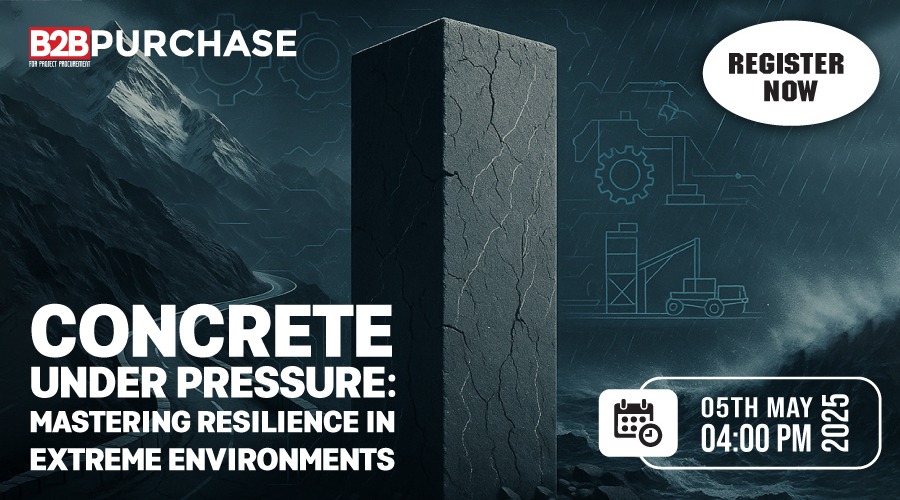5 sustainability tips for commercial HVAC
By Edit Team | February 29, 2016 11:40 am SHARE

Experts from the industry discuss about the sustainability tips for commercial HVAC
HVAC industry is poised for growth given the need for commercial and residential air-conditioning due to burgeoning population in the country. While industries expand, we should keep a check on the carbon footprint we create. Therefore sustainable HVAC has become the norm as slowly industrial end users are realizing the importance of implementing energy efficient practices in every segment of their business including HVAC.
Sustainability is becoming important day by day as Energy is becoming precious and global warming is gaining center stage in every forum. We believe it is important for all of us to leave a healthy and better world for our future generations.
“The growth in the real estate sector has been unprecedented and contributes to around 24 per cent to the construction GDP of India and has been growing at a CAGR of 12 per cent. It has been estimated that 70 per cent of the building stock in the year 2030 would be built during 2010 – 30. The biggest energy guzzler is the residential and commercial sectors which currently account for 29 per cent of the total electricity consumption, which is expected to increase near future, if present trends continue,” says Rajesh Premchandran, Vice-President, Air Conditioning and Cooling Division, Danfoss India.
1. Energy efficient
There are energy efficient compressors which are transforming the commercial HVAC market. Premchandran throws light on Danfoss Turbocor VTT centrifugal compressors that introduces intraflow to improve efficiency and provide an extended stable operating range while simplifying capacity control enabling chiller manufacturers to meet the most stringent efficiency standards and to get green building certifications.
“We, ZIEHL-ABEGG, started our journey more than 100 years back with a promise that every product that we design and manufacture shall be energy efficient and will help all of us to lead better lives,” boasts Vikas Kundra, Managing Director, ZIEHL-ABEGG INDIA Pvt Ltd.
ZIEHL-ABEGG introduced ZAvblue Centrifugal Fans, having bionic design, which is said to be 20 per cent more efficient than other standard products in the market. The ZAvblue can be used for ventilation and exhaust (duct, tube and roof fans) for close control air handling units (cooling of data centres) as well as in clean rooms, heat pumps or compact air-conditioning units. “ZAvblue has been specially optimised to provide high efficiency for high air flow in the most confined spaces,” says Kundra.
Therefore, energy efficiency is one of the most sustainable options and utilising energy efficient practices within the HVAC industry helps in saving energy. This trend should be adopted across the industry.
2. Environment friendly
From a sustainability perspective, it is vital that system components and controls be correctly designed and commissioned. “Mostly HVAC systems are installed in commercial buildings without adequate thought being given to the cooling requirements of the building. Consequently energy is wasted in over cooling while making the occupants uncomfortable. Such oversized HVAC systems are undesirable as these can have a negative effect on the environment, on occupant comfort,” observes BB Kale, Head – Product and Marketing, Emerson Climate Technologies.
The HVAC industry needs to use products that take care of the environment. Saving energy and using recyclable materials for developing new generation products thereby protecting the environment. Saving energy means energy is being produced. Fans should be designed in such a way that they hardly make any noise so that there won’t be much noise pollution.
ZIEHL-ABEGG’s ZAplus stands for an axial fan placed in a compact unit made of high-strength composite material in which the motor and controller are integrated. Along with the perfectly matched combination of efficient individual elements, the composite material also permits new shapes, which have a positive selective influence on the airflow and reduces the noise levels.
ZAplus system minimises the risk of a thermal short-circuit. For device manufacturers which install sound attenuation or flexible connectors, there are standardised connections on both sides of ZAplus (Eurovent flange); a closed cable duct protects the electric cables.
3. Renewable energy
One of the main areas where one needs to focus is on waste heat recovery and using more renewable energy, an energy that is collected from resources which are naturally replenished on a human timescale. This is one area which is not given due importance.
Amit Goliwar, Business Leader, Industrial Equipment, Alfa Laval (India) Ltd says, “It is important that the usage of auto modulating solar and heat pumps used with low LMTD where maximum possible solar or geo thermal energy will be utilised and fossil fuel can be saved. Packaged systems with all necessary controls mounted on the machine itself will make a system more usable and will have less manual intervention.”
4. Performance of equipment
For critical designs, third party approved products are better since performance is tested by independent agency, observes Goliwar. Air Conditioning Heating and Refrigeration Institute (AHRI) has stringent design and performance norms which guarantee the performance of equipment. This will ensure long life of system for investors and system designers.
“Few manufacturers are offering extended performance warranty for AHRI certified products. This certification is anyway followed worldwide will be soon become popular in India as well,” says Goliwar.
5. Reduce operating cost
Oversized HVAC systems have huge cost implications. Components like chillers, pumps and cooling towers have the largest capital cost implication in these types of over-sized designs. Other components like air-handlers (fans, motors and coils), pipe work and ductwork can also have significant cost penalties, because of the large quantities involved.
“While investing in a design system, it is important for an organization to take into account all the parameters. One must design a system by looking at its total life cycle cost instead of merely the immediate CAPEX investments. By taking due consideration of the CAPEX and OPEX the organisation can choose a system that minimises its total cost of ownership,” says Kale.
With more and more high rise buildings coming in metro cities in India, pressure breaker systems are becoming more critical, especially when focus in on reducing utility bills. Close temperature approach is more popular and having benefits since it saves energy. Heat exchangers which work with 1 to 1.5 deg LMTD (logarithmic mean temperature difference) have an advantage. For low LMTD heat exchangers, design becomes more critical although capacities can be same.
Goliwar explains with an example, “LMTD of 2 deg will need say X area, with 1 deg LMTD area can go upto 2X.Low LMTD will be met with taller plate heat exchangers easily. With low LMTD, temperature stretch of 9 deg C in single pass can further reduce operating cost, will make system more compact saving space and can be easy to maintain the system. This will reduce load on pumps.”
In areas where good quality water is costly, adiabatic air coolers can be used which helps to save water and can also give attractive return on investment in few cases even less than 2 years, explains Goliwar. Existing wet cooling towers can also be replaced with some modifications in the HVAC system and this will help reduce operating cost of existing HVAC system.
“Today’s HVAC systems are incredibly complex, and are designed to interface with energy saving devices efficiently. Overall, the system design and its execution should use industry best practices. The above mentioned five sustainability tips will not only ensure that your system design operates with optimal efficiency but will also go a long way in minimising its impact on the environment,” concludes Kale.
—————–
It is important that the usage of auto modulating solar and heat pumps used with low LMTD where solar or geo thermal energy will be utilised.
Amit Goliwar, Business Leader, Industrial Equipment, Alfa Laval (India) Ltd
——————
Oversized HVAC systems are undesirable as these can have a negative effect on the environment.
BB Kale, Head- Product & Marketing, Emerson Climate Technologies
——————–
Energy efficiency is one of the most sustainable options and utilising energy efficient practices within the HVAC industry helps in saving energy.
Vikas Kundra, Managing Director, ZIEHL-ABEGG INDIA Pvt Ltd.
——————–
The biggest energy guzzler is the residential and commercial sectors which currently account for 29 per cent of the total electricity consumption.
Rajesh Premchandran, Vice-President, Air Conditioning and Cooling Division, Danfoss India
Cookie Consent
We use cookies to personalize your experience. By continuing to visit this website you agree to our Terms & Conditions, Privacy Policy and Cookie Policy.





































-20240213125207.png)

























